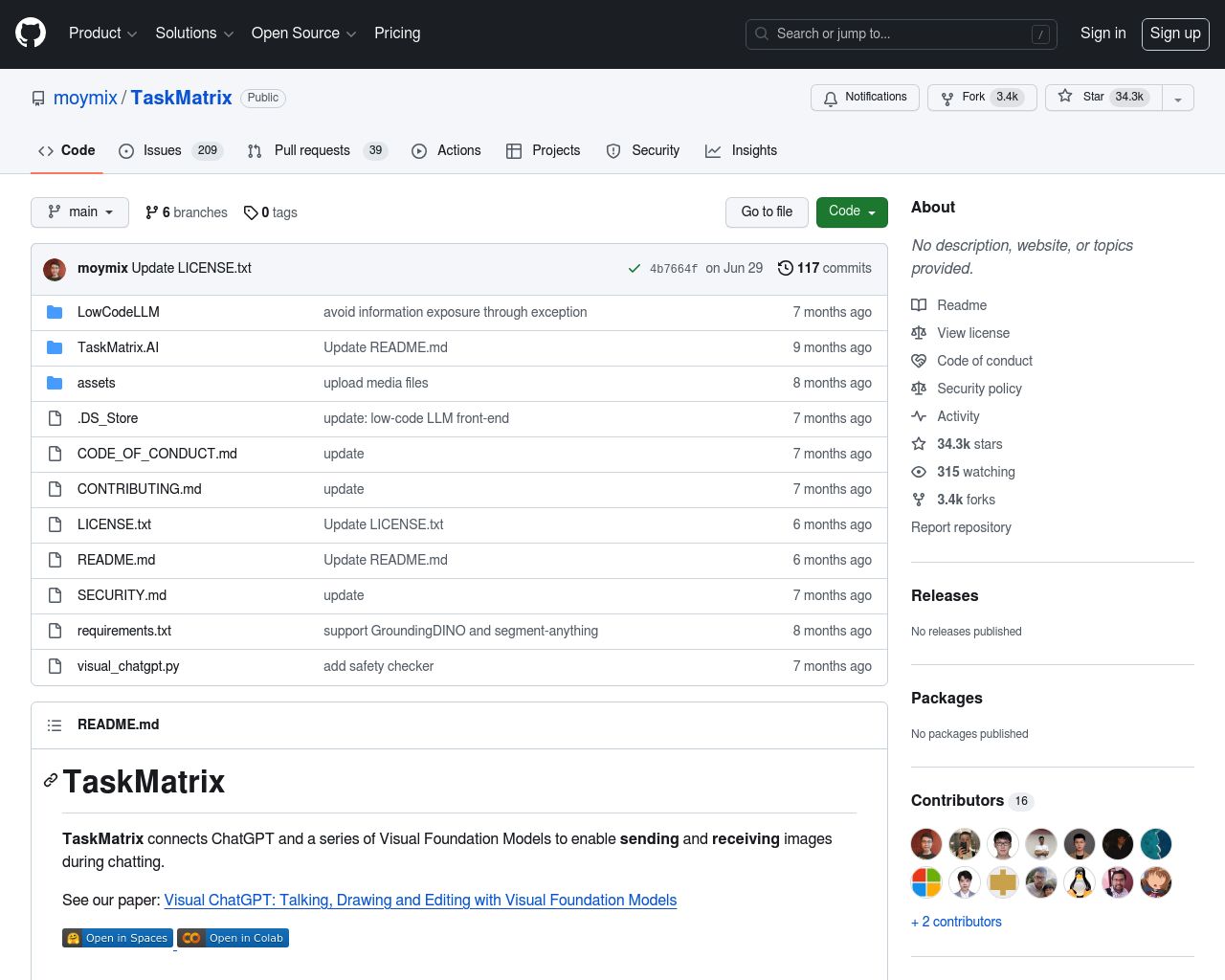Unito vs. TaskMatrix: AI-Powered Workflow Automation Compared
AI-powered workflow automation and integration platforms are transforming how businesses operate, collaborate, and innovate. This comprehensive review compares three leading solutions: Unito vs. TaskMatrix, and SmythOS. We’ll explore their unique features, integration capabilities, and AI-driven functionalities to help you determine which platform best suits your organization’s needs. Whether you’re a developer seeking advanced API integrations, a business leader focused on scalability and security, or a non-technical user looking for intuitive no-code solutions, our analysis will provide valuable insights to guide your decision-making process. Discover how these platforms leverage AI to streamline workflows, enhance productivity, and unlock new possibilities for your team.
Unito Overview
Unito delivers a powerful integration solution through its Sync Platform, enabling seamless connections between diverse tools used by teams across organizations. The platform excels in real-time two-way synchronization, ensuring data consistency and up-to-date information across connected applications. This capability proves invaluable for businesses seeking to streamline workflows and enhance collaboration across different departments and tools.


Unito delivers a powerful integration solution through its Sync Platform, enabling seamless connections between diverse tools used by teams across organizations.
Unito’s no-code workflow automation stands out as a key feature, allowing users to create complex integrations without programming skills. The visual workflow designer empowers teams to build, visualize, and refine their processes effortlessly. This accessibility opens up advanced integration possibilities to a broader range of users, from technical professionals to business analysts.
The platform’s deep field configuration and custom field syncing set it apart in the market. Users can tailor synchronizations to match specific needs, accommodating unique workflows and data structures. This flexibility proves crucial for organizations with specialized processes or those using highly customized tools. Additionally, Unito’s support for attachment streaming and comment syncing ensures comprehensive information sharing, preventing data silos and fostering seamless communication.
Users can tailor synchronizations to match specific needs, accommodating unique workflows and data structures.
While Unito excels in workflow automation and tool integration, it’s important to note that it doesn’t offer AI agent capabilities or autonomous problem-solving features. The platform focuses on connecting existing tools rather than providing AI-driven decision-making or task execution. For organizations primarily seeking to bridge gaps between their current software ecosystem, this limitation may not be significant.
Unito prioritizes security and scalability, offering enterprise-level features such as SOC II Type 2 certification and the ability to sync large volumes of tasks. These aspects make it suitable for businesses of various sizes, from small teams to large enterprises. The platform’s test mode for refining workflows before deployment and comprehensive activity logs further enhance its appeal to organizations valuing precision and transparency in their integrations.
TaskMatrix Overview
TaskMatrix.AI stands out as an advanced AI ecosystem developed by Microsoft. It enhances general-purpose foundation models like GPT-4 by integrating them with specialized models through APIs. This innovative tool functions as a project manager, bridging diverse AI models to perform a wide range of tasks efficiently.
Microsoft’s TaskMatrix.AI connects foundation models with specialized APIs, enabling the execution of diverse tasks in both digital and physical realms. The system understands user instructions, generates executable action codes, and performs tasks using appropriate APIs. Its architecture includes a vast API repository, an API selector for choosing relevant APIs, and an action executor to carry out tasks.
TaskMatrix.AI stands out as an advanced AI ecosystem… It enhances general-purpose foundation models like GPT-4 by integrating them with specialized models through APIs.
Key components of TaskMatrix include a conversational foundation model capable of understanding multimodal inputs, a comprehensive API platform with consistent documentation, an intelligent API selector, and an action executor. These elements work together to create a versatile AI ecosystem that can handle complex tasks across various domains.


TaskMatrix.AI’s unique selling point lies in its ability to connect powerful foundation models with millions of APIs, enabling an extensive range of tasks across different domains. Its modular design, comprehensive API repository, and continuous learning capability make it a versatile tool for developers and businesses integrating advanced AI into their operations.
TaskMatrix.AI’s unique selling point lies in its ability to connect powerful foundation models with millions of APIs, enabling an extensive range of tasks across different domains.
While TaskMatrix.AI offers impressive capabilities, it’s important to note that it may have a steeper learning curve compared to some no-code platforms. Its focus on API integration and foundation model enhancement might require users to have a certain level of technical expertise to fully leverage its potential. However, for those looking to push the boundaries of AI integration and task execution, TaskMatrix.AI presents a powerful and flexible solution in the evolving landscape of AI agent builders.
Feature Comparison
Unito and TaskMatrix offer distinct approaches to workflow automation and AI integration. Unito excels in connecting diverse tools through its Sync Platform, enabling real-time two-way synchronization across applications. Its visual workflow designer and no-code automation empower users to create complex integrations without programming skills. Unito’s deep field configuration and custom field syncing accommodate specialized processes and data structures.
TaskMatrix, developed by Microsoft, enhances general-purpose foundation models like GPT-4 by integrating them with specialized models through APIs. It functions as an AI ecosystem capable of understanding user instructions, generating executable action codes, and performing tasks using appropriate APIs. TaskMatrix’s architecture includes a vast API repository, an API selector, and an action executor to carry out diverse tasks in both digital and physical realms.
While Unito focuses on workflow synchronization and tool integration, TaskMatrix emphasizes AI-driven task execution and problem-solving. Unito lacks AI agent capabilities and autonomous problem-solving features, whereas TaskMatrix leverages foundation models and specialized APIs to perform complex tasks across various domains. TaskMatrix’s ability to handle multimodal inputs and generate interpretable responses gives it an edge in AI-powered automation scenarios.
Feature Comparison Table
| Unito | TaskMatrix | SmythOS | |
|---|---|---|---|
| CORE FEATURES | |||
| Autonomous Agents | ❌ | ✅ | ✅ |
| Multimodal | ❌ | ✅ | ✅ |
| Human-AI Interaction | ❌ | ✅ | ✅ |
| Agent Work Scheduler | ❌ | ✅ | ✅ |
| SECURITY | |||
| IP Control | ❌ | ✅ | ✅ |
| COMPONENTS | |||
| Foundation AIs | ❌ | ✅ | ✅ |
| Huggingface AIs | ❌ | ✅ | ✅ |
| Classifiers | ❌ | ✅ | ✅ |
| Logic | ✅ | ✅ | |
| Data Lakes | ❌ | ❌ | ✅ |
| DEPLOYMENT OPTIONS (EMBODIMENTS) | |||
| Deploy as Webhook | ❌ | ✅ | ✅ |
| Staging Domains | ❌ | ✅ | ✅ |
| Deploy as Site Chat | ❌ | ✅ | ✅ |
| Deploy as Scheduled Agent | ❌ | ✅ | ✅ |
| Deploy as GPT | ❌ | ✅ | ✅ |
| DATA LAKE SUPPORT | |||
| Hosted Vector Database | ❌ | ❌ | ✅ |
| Sitemap Crawler | ❌ | ❌ | ✅ |
| YouTube Transcript Crawler | ❌ | ❌ | ✅ |
| URL Crawler | ❌ | ✅ | ✅ |
| PDF Support | ❌ | ✅ | ✅ |
| Word File Support | ❌ | ✅ | ✅ |
| TXT File Support | ❌ | ✅ | ✅ |
Best Alternative to Unito and TaskMatrix
SmythOS stands out as a superior alternative to Unito and TaskMatrix, offering a comprehensive platform for AI agent creation and deployment. Our solution combines the best of both worlds: the workflow integration capabilities of Unito and the AI-powered task execution of TaskMatrix, while providing additional features that set it apart.
Unlike Unito’s focus on tool synchronization, SmythOS enables users to create intelligent, autonomous agents capable of complex problem-solving and decision-making. We offer a visual builder that simplifies the development process, making advanced AI accessible to users with varying levels of technical expertise. This approach democratizes AI development, allowing businesses to harness the power of artificial intelligence without extensive coding knowledge.
SmythOS enables users to create intelligent, autonomous agents capable of complex problem-solving and decision-making.
While TaskMatrix excels in connecting foundation models with specialized APIs, SmythOS goes further by providing a complete ecosystem for AI agent development and deployment. Our platform supports a wide range of AI models, including those from OpenAI, Anthropic, and Hugging Face, giving users the flexibility to choose the best-suited models for their specific needs. We also offer extensive integration capabilities, allowing seamless connection with various data sources, APIs, and tools.
SmythOS distinguishes itself with features like multi-agent collaboration, advanced debugging tools, and flexible deployment options. Users can create teams of AI agents that work together on complex tasks, debug their workflows step-by-step, and deploy their agents as APIs, chatbots, or scheduled tasks. These capabilities enable businesses to build sophisticated AI solutions that can adapt to their unique requirements and integrate seamlessly into existing systems.
SmythOS distinguishes itself with features like multi-agent collaboration, advanced debugging tools, and flexible deployment options.
By choosing SmythOS, users gain access to a powerful, scalable, and user-friendly platform that combines the strengths of Unito and TaskMatrix while offering additional features and flexibility. Our solution empowers businesses to create AI agents that can automate complex workflows, enhance decision-making processes, and drive innovation across various industries.
Conclusion
Unito, TaskMatrix, and SmythOS each offer unique approaches to workflow automation and AI integration. Unito excels in connecting diverse tools through real-time synchronization, while TaskMatrix leverages Microsoft’s AI ecosystem to enhance foundation models with specialized APIs. However, SmythOS emerges as the superior choice for businesses seeking a comprehensive AI agent development and deployment solution.
SmythOS stands out with its intuitive drag-and-drop interface, extensive integration ecosystem, and versatile deployment options. Unlike Unito’s focus on tool synchronization or TaskMatrix’s emphasis on API integration, SmythOS provides a complete platform for creating, managing, and deploying AI agents across various environments. Its support for multi-agent orchestration and pre-built templates enables users to tackle complex tasks efficiently, surpassing the capabilities of both Unito and TaskMatrix.
While Unito and TaskMatrix may suit specific use cases, SmythOS offers a more holistic approach to AI implementation. Its ability to integrate with over 300,000 services, support for multiple AI models, and flexible deployment options make it an ideal choice for businesses of all sizes. SmythOS not only streamlines workflow automation but also empowers users to harness the full potential of AI without extensive technical expertise.
To experience the power of SmythOS and revolutionize your approach to AI integration, create a free SmythOS account today. Explore our diverse range of AI-powered agent templates to jumpstart your projects and discover 300,000+ seamless integrations to enhance your AI workflow. With SmythOS, you can create once and deploy AI agents anywhere, transforming your business processes and driving innovation at unprecedented levels.
Last updated:
Disclaimer: The information presented in this article is for general informational purposes only and is provided as is. While we strive to keep the content up-to-date and accurate, we make no representations or warranties of any kind, express or implied, about the completeness, accuracy, reliability, suitability, or availability of the information contained in this article.
Any reliance you place on such information is strictly at your own risk. We reserve the right to make additions, deletions, or modifications to the contents of this article at any time without prior notice.
In no event will we be liable for any loss or damage including without limitation, indirect or consequential loss or damage, or any loss or damage whatsoever arising from loss of data, profits, or any other loss not specified herein arising out of, or in connection with, the use of this article.
Despite our best efforts, this article may contain oversights, errors, or omissions. If you notice any inaccuracies or have concerns about the content, please report them through our content feedback form. Your input helps us maintain the quality and reliability of our information.
